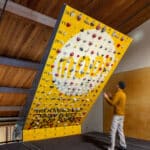Moonboarding 101
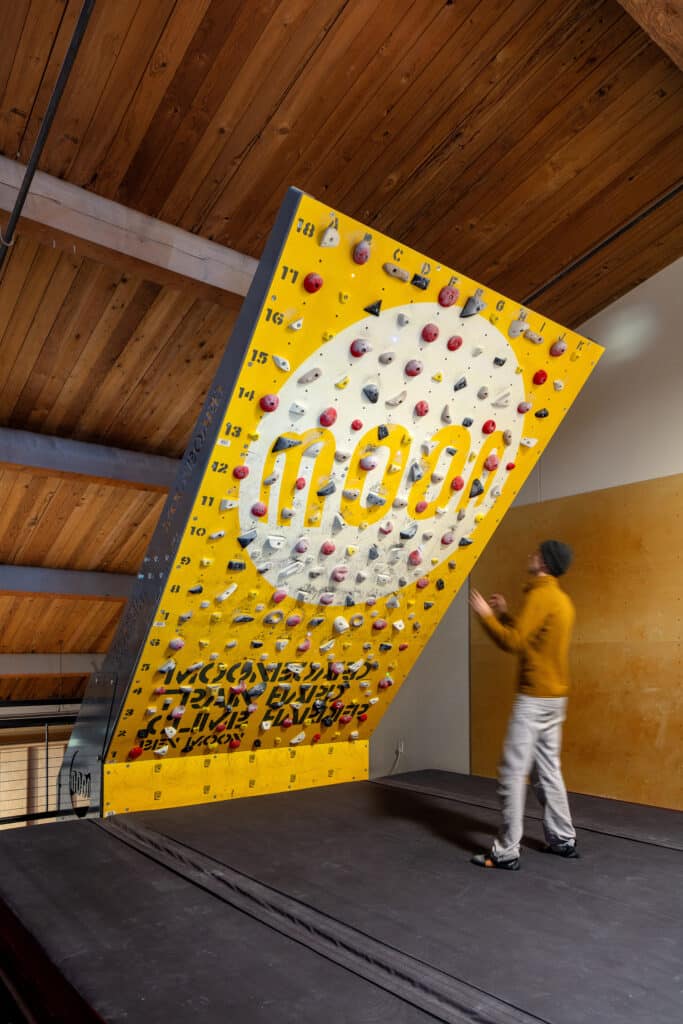
Have you checked out the Moonboard? It’s nestled away in the loft at Twin Cities Bouldering. No? That’s understandable; with 18,000 square feet of climbing, it can be tough to make the journey and take time out of your session to visit this little training board. At first glance, it might look a little silly—a small 8×12 overhanging board scattered with black, white, and yellow holds, and little lights flashing. It doesn’t seem as impressive as the sawtooth feature, the comp wall, or the large roof. What the Moonboard lacks in size, it makes up for everywhere else.
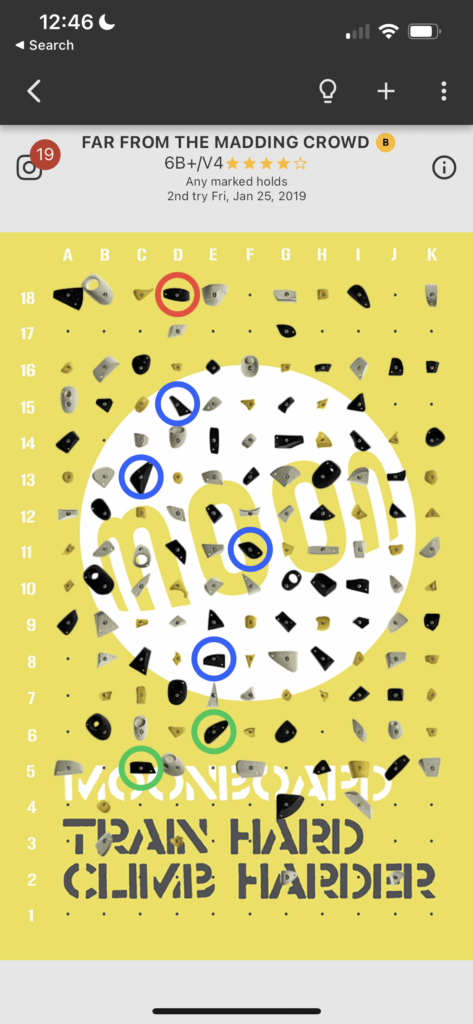
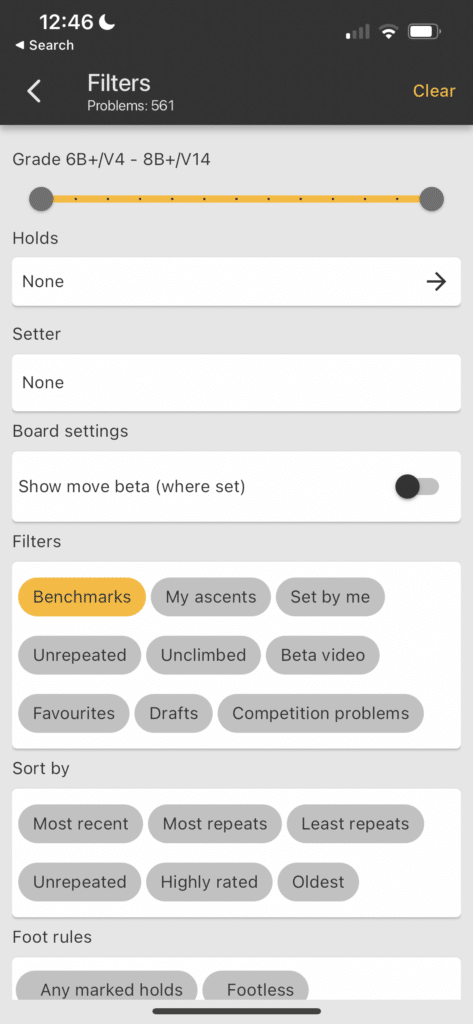
Get to know your Moonboard. TCB has the 2016 Moonboard (as of August 2024), which boasts a catalog of 50,000+ climbs (and growing). The crème de la crème of these routes is the benchmarks—around 560 hand-selected, best climbs of the grade. The board sits at a 40-degree overhang, and the grading starts at V4. The steepness, in combination with the relatively simple but small, challenging holds, makes the barrier to entry for climbing on the higher end. If you aren’t there yet, you can still benefit from the Moonboard: watch others climb on it, grab the holds with your feet on the ground, and hang off the holds until you feel comfortable climbing. When you do start climbing, I suggest loading up “An Easy Problem,” arguably the easiest of the problems but in no way an easy climb, at V4 it still packs a punch. If you have never board climbed, expect a challenge.
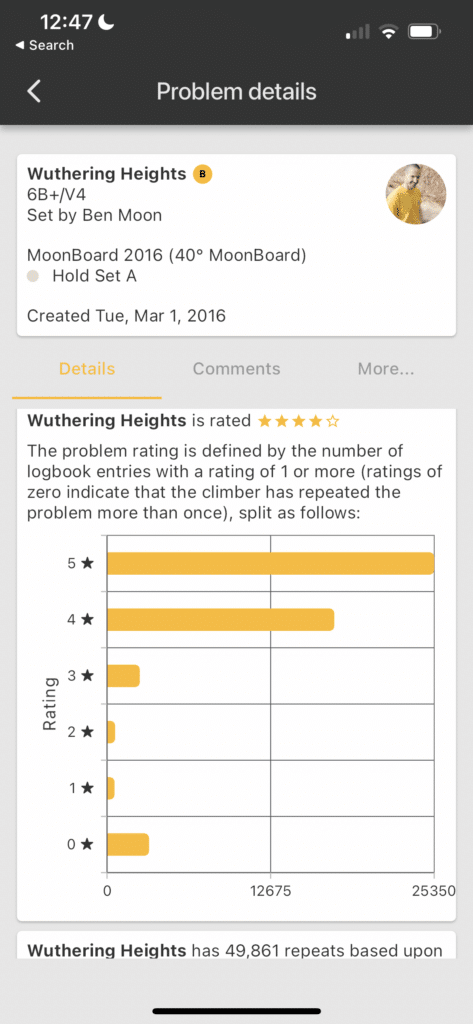
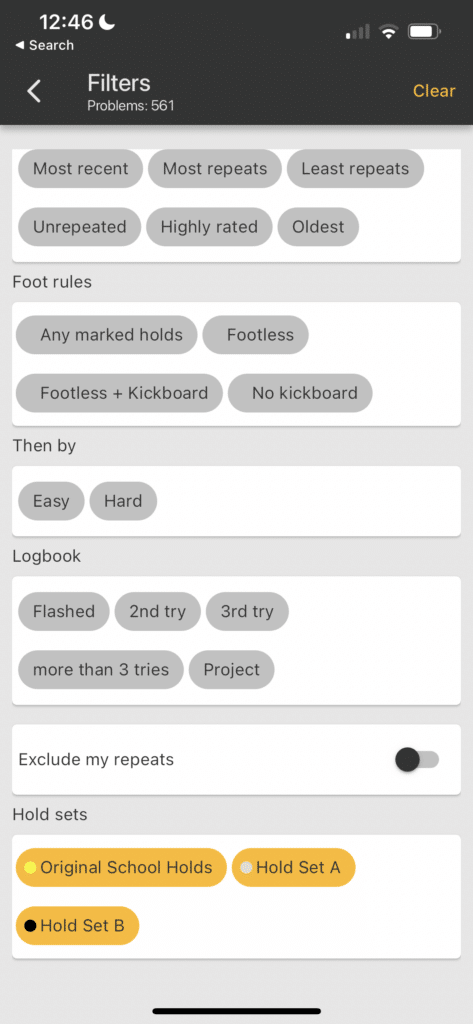
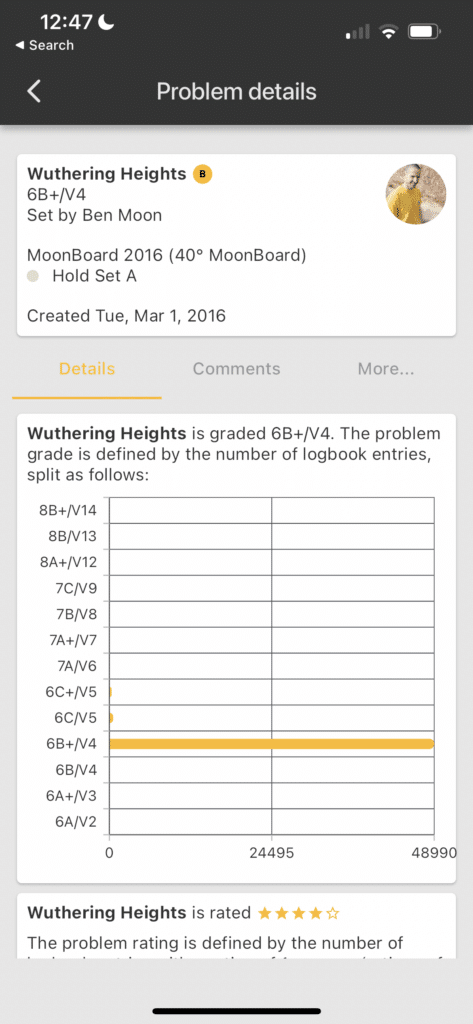
The Moonboard is going to feel different from commercial gym routes and boulders. Most notably, the climbing style. The Moonboard forces a more square style of climbing; if you are used to twisting in. This can take some getting used to. Here are some tips and tricks to help you get started!
Tips & Tricks:
- Try hard! Moonboard problems average 3-5 moves, which is going to feel a lot harder than a boulder of the same grade with 8-12 moves.
- Climb fresh! Come to the Moonboard well-rested. The Moonboard is great for limit-level project climbing, but even if you’re doing a volume session on the Moonboard well below your limit, you want to come ready to try hard.
- Use the Font grades! This might seem odd at first, but the grades V5 and V8 can both be split into two separate Font grades. This is why some problems at this level can feel much harder than others. If you are projecting at these grades, change the grading or look at the grade to see if they fall on the easier or harder end!
- Warm up! The Moonboard holds can be small and tweaky, so make sure your fingers are warmed up and ready to grab hard.
- Don’t get sucked into the grades! Grades anywhere can be all over the place, depending on your style or strengths and weaknesses. Just because you tried one VX, don’t let that stop you from trying another V(X+1 or 2) or make you think you are above doing a V(X-1 or 2). As long as you are trying hard you are gaining something.
- Don’t have an ego. Just because you climb at VX, don’t think easier boulders are beneath you. A lot of the boulders are easier or harder variations of other boulders. Same start or same finish but with a harder intro or outro sequence. Sometimes they are the same exact boulder with just one different, more challenging hold or move. So by sending that easier problem, you are training for the harder problem.
A good example of this is Slab Training V5 and Five Finger Discount V7—just one hold is different. With a little more finger strength and power, you can go from a V5 to a V7 boulder, and then once you’ve done that, you can do To Warmer Waters V8, which is just a slightly harder variation of Five Finger Discount. It’s a perfect way to start progressing from V5 to V8. - Use the filters! Here we can sort by benchmarks, newest, most repeated, least repeated, easiest, and hardest. Sorting by most repeated, we can see the most popular routes, which tend to be more fun. Stuck at a grade? Jump to the next to try the most repeated; a lot of times, the most repeated of the next grade can feel easier than the least repeated of the current grade.
Benchmarks to check out! Here is a list of our favorite benchmarks from V4-V11:
- V4 – An Easy Problem
- V5 – Pixel Bricks
- V6 – ACG24
- V7 – All Night Cactus
- V8 – Iron Arm
- V9 – Crimp Tai Chi
- V10 – Piccole Righe
- V11 – Bunny
Runner ups and honorable mentions!
- V4 – Bitter, Getting Fingers Ready, Far From the Madding crowd
- V5 – Full Moon Party, Biggy Smalls, Hocus Pocus
- V6 – Hard Times, Northside, Kemals Var
- V7 – Five Finger Discount, Austroraptor, North Dakota
- V8 – Bill Clinton’s Sax Var, Post Captain, Hipster Rig, The Deceivers, Cozza, The Mice Are Men, Sora Maffei
- V9 – Foundry League 1, Salathe, Drinking Problems, Rila Mission, Leocremaflanders, Deep, Piccole Left
- V10 – Whisping Aspens, Pleven Style DG, Nectar of the Todds, Action Directe, Powerslave Trainer, Black Cat’s
- V11 – Attic Addict, One Armed Bandit
Climbing is dangerous, it involves inherent and other risks and cannot be eliminated. The information presented here does not describe all of the risks associated with climbing and is not intended to replace or supersede expert instruction and training.
© 2024 Vertical Endeavors, Inc. All rights reserved. The contents of this article, photographs, and graphical representations are protected by U.S. and International copyright laws. Reproduction and distribution, in part or whole, without written permission from Vertical Endeavors are prohibited. The opinions and information contained in this article are for entertainment and informative purposes. They are those of the author and may not represent those of Vertical Endeavors, and do not necessarily reflect the ideas, ideologies, opinions, or points of view of the organization, affiliates, owners, stockholders, partners, suppliers, licensors, or staff. Under no circumstances shall Vertical Endeavors or any entity that is, has been, or will be affiliated be liable for any indirect, incidental, consequential, special, or exemplary damages arising out of or in connection with the information contained in this article.

